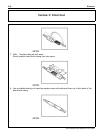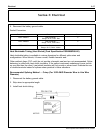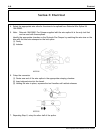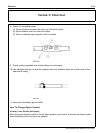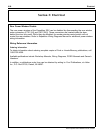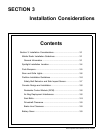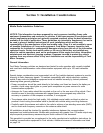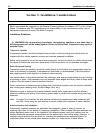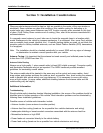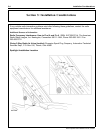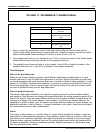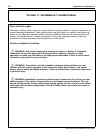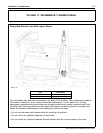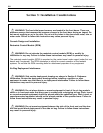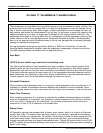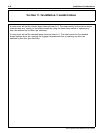
Installation Considerations 3-3
Section 3: Installation Considerations
Glass-mounted antennas should be kept as high as possible in the center of the rear window or
windshield. Some vehicles use glass that contains a thin metallic coating for defrosting or to
control solar gain; glass mount antennas may NOT function correctly when mounted on this type
of glass. (Ford Privacy Glass contains such a coating.) Also, refer to the antenna manufacturer’s
recommendations.
If a magnetic mount antenna is used, take care to locate the magnetic base in a location which
avoids interference to the vehicle’s compass mechanism, if so equipped. Also, some Ford vehicles
use non-metallic body panels (decklids, etc.). If metallic backing panels are used, do not block the
reception paths for factory installed antennas, such as Global Position Satellite (GPS) transceivers,
if so equipped.
Note: The installation should be checked periodically for correct SWR and any signs of damage
or deterioration to maintain correct operation with your vehicle.
Antenna Tuning: It is important that the antenna be tuned correctly and reflected power be kept
to less than 10% (VSWR less than 2:1).
Antenna Cable Routing
Always use a high-quality, 1-piece coaxial cable (at least 95% shield coverage). Connector quality
and termination techniques are just as important. The ARRL handbook provides excellent
guidelines for terminating coaxial cables.
The antenna cable should be treated in the same way as the control and power cables. Avoid
sharp edges and pinches and keep the cable as short as possible. Also, avoid routing the antenna
cable in parallel with vehicle wiring over long distances. If it is necessary to cross over wiring,
cross at right angles. (In some cases, additional shielding between the antenna cable and the
vehicle wiring may be helpful.)
Additional Information
Troubleshooting
Should vehicle-radio interaction develop following installation, the source of the problem should be
identified prior to further operation of the vehicle. Most interaction problems can be eliminated by
following these installation guidelines.
Possible causes of vehicle-radio interaction include:
• Antenna location (move antenna to another position)
• Antenna feed line routing (locate as far as possible from vehicle electronics and wiring)
• Inadequate shielding or loose/corroded connectors associated with the antenna feed line
• Mismatched antenna or high SWR
• Power feeds not connected directly to the vehicle battery
• Power feed routing (locate as far as possible from vehicle electronics and wiring)
2010 Expedition SSV Modifiers Guide, 07/2009



